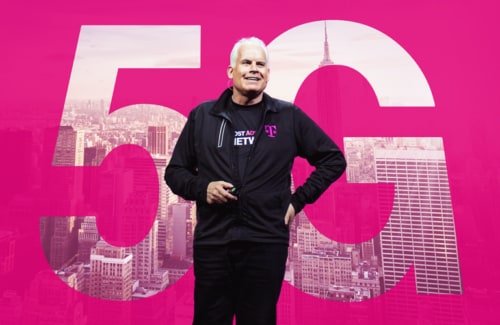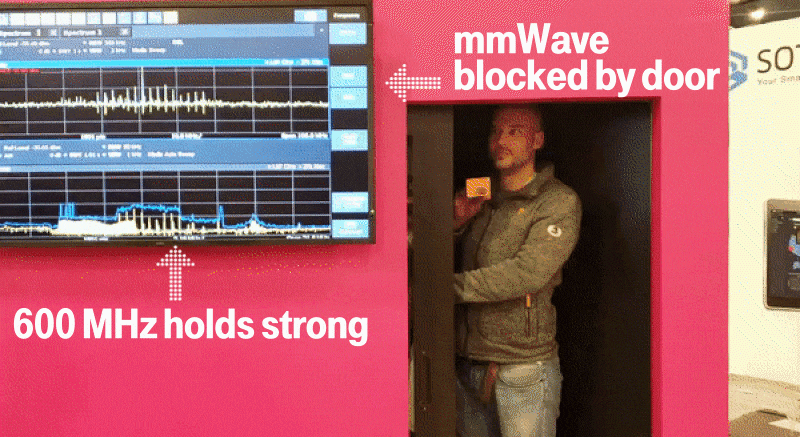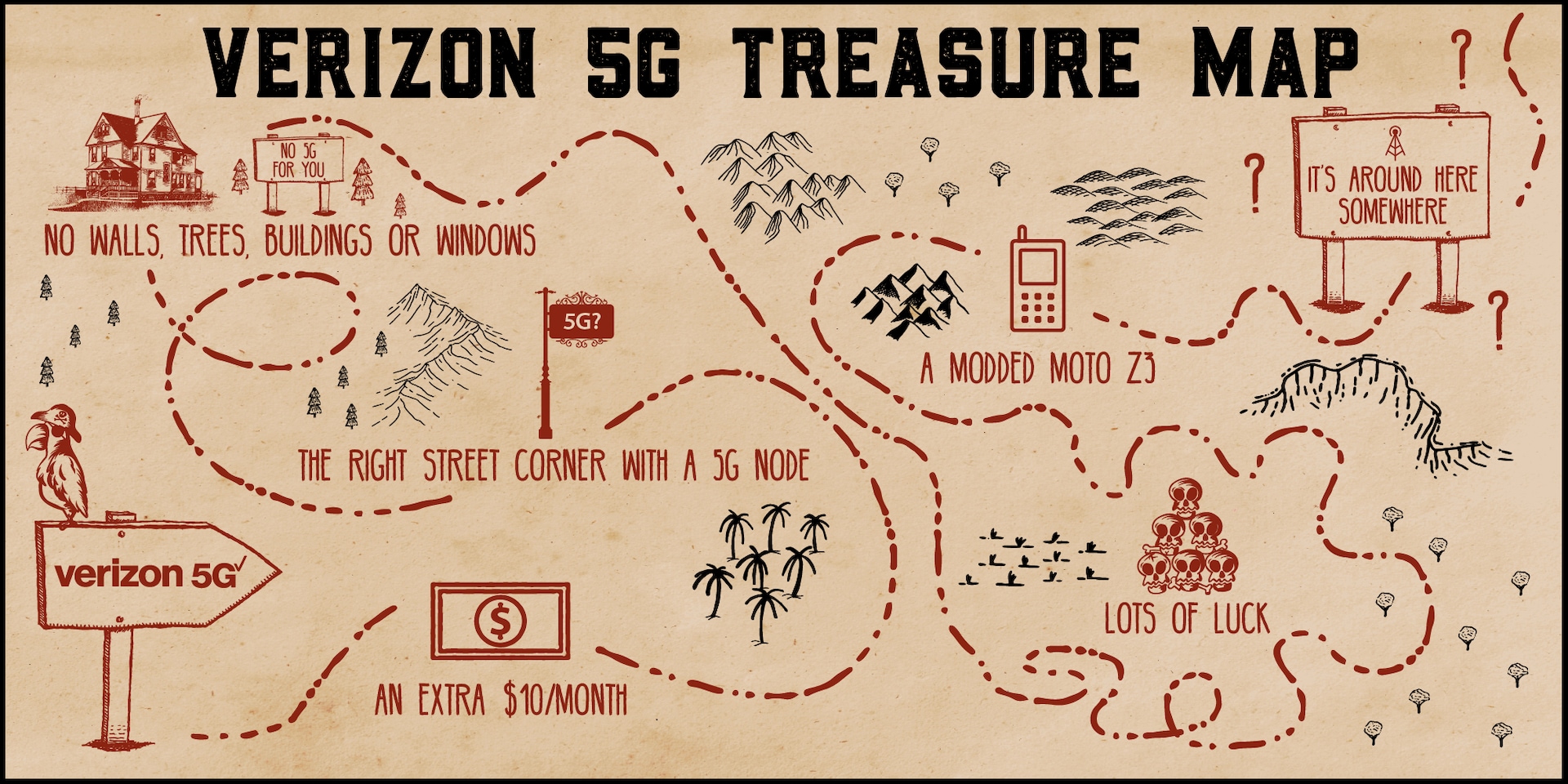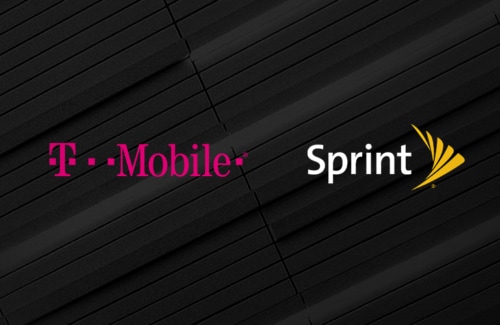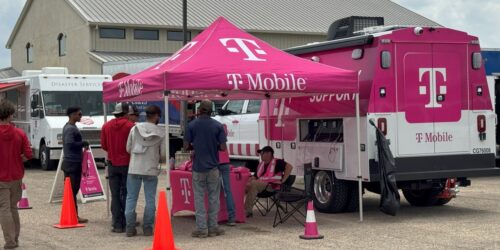5G is at the height of the hype curve right now. There’s a lot of buzz and froth about this vital, important technology… and there’s also a lot of misinformation. I’m not going to add to either. Instead, T-Mobile is going to continue to be the adult in the room on 5G. I know, it’s uncomfortable for us too. Our 5G goal is not headlines or buzz or bragging rights. No, we’re going to do this right … and when it’s ready for our customers. And in a way that allows us to bring the benefits of 5G to the whole country. That’s our mission and the entire rationale behind the proposed merger with Sprint. We believe the country needs 5G for all. And that’s too important. We are going to get it right.
I wish I could say the same for the rest of the industry. But with the 5G path the other guys are on – what I’m calling the status quo – we will not see the transformational power this technology has to completely change EVERY industry. And that’s not good enough.
Case in point, Verizon’s recent 5G launches in Minneapolis and Chicago a little over two weeks ago. They claimed their second 5G “first,” essentially acknowledging that their first 5G “first” with made-up 5G (W)TF technology last year was not, in fact, a 5G first of any kind. Not to be left out of the empty-first-claim party, AT&T quickly reacted to Verizon’s news by trotting out more cities where they have “launched” 5G … but nobody can use it and they’re not selling any 5G devices. They want us to just trust them that 5G is launched.
They’re both obsessed with claiming first, but at the end of the day, it’s meaningless for consumers. In both cases, claiming first was more important to them than providing a good experience. Why? Because both of their long-term spectrum strategies have severe limitations, so they’re focused on bragging rights instead.
Verizon’s mmWave-only 5G plan is only for the few. And it will never reach rural America. Meanwhile, AT&T has rolled out a “5GE” icon to customers phones to dupe them into thinking their same-old 4G LTE service is something new and different (spoiler alert: it’s not).
Verizon’s launch gave everyone a look at the 5G experience they’ll be charging an extra $10 a month for – and, no surprise – coverage is very spotty and unreliable. Verizon won’t publish a coverage map or acknowledge how limited their strategy really is, but people quickly found that Verizon’s 5G was awfully hard to find, barely available at the places it was promised to be available, dropping repeatedly to 4G and disappeared if they stepped into a building. Their rollout was called a “rush job” and “…confusing. Frustrating. Absolutely insane.”
Some of this is physics – millimeter wave (mmWave) spectrum has great potential in terms of speed and capacity, but it doesn’t travel far from the cell site and doesn’t penetrate materials at all. It will never materially scale beyond small pockets of 5G hotspots in dense urban environments.
Here’s what my team has seen:
But some of the pain and frustration people are experiencing is because Verizon rolled out technology that is nowhere near ready for primetime. Verizon basically launched a science experiment using customers as test subjects. I have the exact same 5G mmWave network equipment and software that AT&T and Verizon do, and there’s no way we would launch this for customers right now.
With the status quo from AT&T and Verizon, we’ll continue to see 5G as a treasure hunt, a lottery ticket, panning for gold… We’ll continue to see more confusing, price-hiking, customer-unfriendly BS. We’ll continue to see Es and UWBs and +s and who knows what other mystifying set of descriptors to trick America into thinking it’s getting something it’s not.
T-Mobile will bring 5G to market with the Samsung Galaxy S10 5G when the technology is ready for everyday customer use. And – mark my words – we WILL provide a 5G coverage map, limited as it may be.
Is mmWave spectrum important? Absolutely. But real, game-changing, innovation driving 5G requires broad and deep nationwide coverage. And *that* can only be achieved by using ALL SPECTRUM BANDS.
That’s why only the New T-Mobile will bring #5GForAll.
T-Mobile has a strong portfolio of low band spectrum, which provides the wide area coverage necessary to reach every American. T-Mobile also has mmWave spectrum that provides massive capacity over a very small footprint. It holds big promise for speed and capacity in dense urban areas and venues where large numbers of people gather. And Sprint has the critical middle layer of 2.5 GHz mid-band spectrum, which provides the balance of coverage and capacity that enables a seamless and meaningful 5G experience. Mid-band spectrum is key to providing an ideal mix of coverage and capacity for 5G networks.
The New T-Mobile will utilize its low-band and mmWave spectrum, along with Sprint’s mid-band spectrum to deliver a broad and deep truly nationwide 5G network – the approach that’s NEEDED to serve all Americans, including rural America. And, we won’t charge our customers more for 5G, while Verizon and AT&T continue to jack up prices.
We will keep fighting for consumers and rural America. We’ll keep working toward a 5G future that gives EVERYONE the transformative power 5G can offer by using all spectrum bands – mmWave, mid-band and low-band. We’ll bring our Un-carrier disruptive approach to wireless and beyond. And if our merger with Sprint is approved we’ll fuel new breakthroughs, create thousands of jobs and billions of dollars in value for consumers, all while giving people more choice and more opportunity.
And WE WON’T STOP!
Important Additional Information
In connection with the proposed transaction, T-Mobile US, Inc. (“T-Mobile”) has filed a registration statement on Form S-4 (File No. 333-226435), which was declared effective by the U.S. Securities and Exchange Commission (the “SEC”) on October 29, 2018, and which contains a joint consent solicitation statement of T-Mobile and Sprint Corporation (“Sprint”), that also constitutes a prospectus of T-Mobile (the “joint consent solicitation statement/prospectus”), and each party will file other documents regarding the proposed transaction with the SEC. INVESTORS AND SECURITY HOLDERS ARE URGED TO READ THE JOINT CONSENT SOLICITATION STATEMENT/PROSPECTUS AND OTHER RELEVANT DOCUMENTS FILED WITH THE SEC WHEN THEY BECOME AVAILABLE BECAUSE THEY WILL CONTAIN IMPORTANT INFORMATION. The documents filed by T-Mobile may be obtained free of charge at T-Mobile’s website, at www.t-mobile.com, or at the SEC’s website, at www.sec.gov, or from T-Mobile by requesting them by mail at T-Mobile US, Inc., Investor Relations, 1 Park Avenue, 14th Floor, New York, NY 10016, or by telephone at 212-358-3210. The documents filed by Sprint may be obtained free of charge at Sprint’s website, at www.sprint.com, or at the SEC’s website, at www.sec.gov, or from Sprint by requesting them by mail at Sprint Corporation, Shareholder Relations, 6200 Sprint Parkway, Mailstop KSOPHF0302-3B679, Overland Park, Kansas 66251, or by telephone at 913-794-1091.
No Offer or Solicitation
This communication shall not constitute an offer to sell or the solicitation of an offer to buy any securities, nor shall there be any sale of securities in any jurisdiction in which such offer, solicitation or sale would be unlawful prior to registration or qualification under the securities laws of any such jurisdiction. No offering of securities shall be made except by means of a prospectus meeting the requirements of Section 10 of the U.S. Securities Act of 1933, as amended.
Cautionary Statement Regarding Forward-Looking Statements
This communication contains certain forward-looking statements concerning T-Mobile, Sprint and the proposed transaction between T-Mobile and Sprint. All statements other than statements of fact, including information concerning future results, are forward-looking statements. These forward-looking statements are generally identified by the words “anticipate,” “believe,” “estimate,” “expect,” “intend,” “may,” “could” or similar expressions. Such forward-looking statements include, but are not limited to, statements about the benefits of the proposed transaction, including anticipated future financial and operating results, synergies, accretion and growth rates, T-Mobile’s, Sprint’s and the combined company’s plans, objectives, expectations and intentions, and the expected timing of completion of the proposed transaction. There are several factors which could cause actual plans and results to differ materially from those expressed or implied in forward-looking statements. Such factors include, but are not limited to, the failure to obtain, or delays in obtaining, required regulatory approvals, and the risk that such approvals may result in the imposition of conditions that could adversely affect the combined company or the expected benefits of the proposed transaction, or the failure to satisfy any of the other conditions to the proposed transaction on a timely basis or at all; the occurrence of events that may give rise to a right of one or both of the parties to terminate the business combination agreement; adverse effects on the market price of T-Mobile’s or Sprint’s common stock and on T-Mobile’s or Sprint’s operating results because of a failure to complete the proposed transaction in the anticipated timeframe or at all; inability to obtain the financing contemplated to be obtained in connection with the proposed transaction on the expected terms or timing or at all; the ability of T-Mobile, Sprint and the combined company to make payments on debt or to repay existing or future indebtedness when due or to comply with the covenants contained therein; adverse changes in the ratings of T-Mobile’s or Sprint’s debt securities or adverse conditions in the credit markets; negative effects of the announcement, pendency or consummation of the transaction on the market price of T-Mobile’s or Sprint’s common stock and on T-Mobile’s or Sprint’s operating results, including as a result of changes in key customer, supplier, employee or other business relationships; significant transaction costs, including financing costs, and unknown liabilities; failure to realize the expected benefits and synergies of the proposed transaction in the expected timeframes or at all; costs or difficulties related to the integration of Sprint’s network and operations into T-Mobile; the risk of litigation or regulatory actions; the inability of T-Mobile, Sprint or the combined company to retain and hire key personnel; the risk that certain contractual restrictions contained in the business combination agreement during the pendency of the proposed transaction could adversely affect T-Mobile’s or Sprint’s ability to pursue business opportunities or strategic transactions; effects of changes in the regulatory environment in which T-Mobile and Sprint operate; changes in global, political, economic, business, competitive and market conditions; changes in tax and other laws and regulations; and other risks and uncertainties detailed in the Form S-4, as well as in T-Mobile’s Annual Report on Form 10-K for the fiscal year ended December 31, 2018 and in its subsequent reports on Form 10-Q, including in the sections thereof captioned “Risk Factors” and “Cautionary Statement Regarding Forward-Looking Statements,” as well as in its subsequent reports on Form 8-K, all of which are filed with the SEC and available at www.sec.gov and www.t-mobile.com. Forward-looking statements are based on current expectations and assumptions, which are subject to risks and uncertainties that may cause actual results to differ materially from those expressed in or implied by such forward-looking statements. Given these risks and uncertainties, persons reading this communication are cautioned not to place undue reliance on such forward-looking statements. T-Mobile assumes no obligation to update or revise the information contained in this communication (whether as a result of new information, future events or otherwise), except as required by applicable law.

